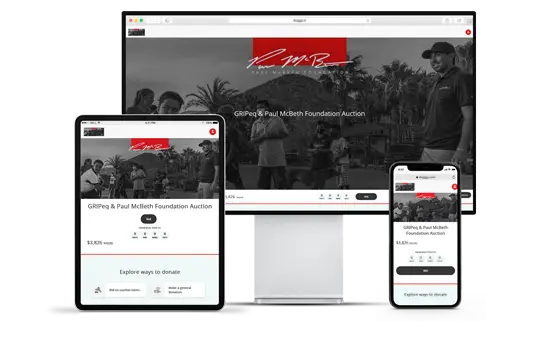Online Charity Auctions for Nonprofits
Ready to launch a fundraising auction online?
Looking for a mobile bidding tool or text to bid function?
Get Started with the best free online charity auction platform available.
- NO SUBSCRIPTION Required
- FREE Bidder Text Message and Email Notifications
- FREE Text to Bid (for US Auctions)
- FREE Custom Website Branding
- FREE Gamification Elements (Countdown, Thermometer, Chatter, Livestream)
- FREE Customer Success and Technical Support
- 4.9% Auction Platform Fee

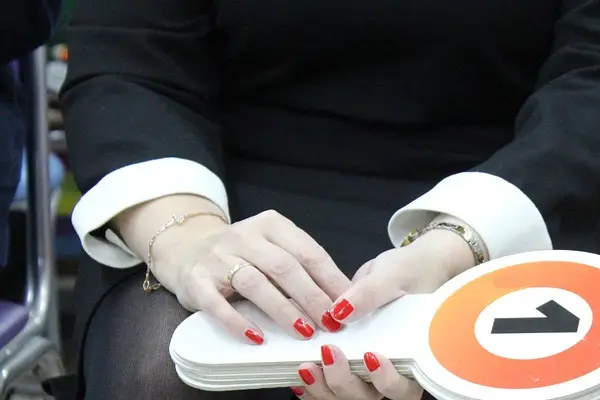
Online charity auctions are a great way to raise money for your organization and community. Our fundraising auction websites make it so easy and make you look good! Best of all, our auction software requires no subscriptions or upfront fees. Just sign up and start fundraising.
How Do Charity Auctions Work?
Charity auctions are a fantastic way to raise funds for a good cause. They allow donors to contribute while having fun, especially when gamification elements are added to the auction website. And with the rise of online fundraising, charity auctions have never been more accessible.

Online charity auctions run entirely on an auction platform that provides online and mobile bidding software. Administrators add auction items and categories. Auction items can include images and descriptions, starting bids and bid increments, Buy It Now pricing, and much more. All of this on a fundraising website that includes your nonprofit branding – sounds good, right?
Benefits of Hosting Your Charity Auction Online
There are several benefits to hosting a charity auction online, including:
- Increased Reach: Online charity auctions have a broader reach, allowing you to communicate with more potential supporters and donors.
- Reduced Costs: Online charity auctions eliminate the need for physical venues, catering, and staffing, making them more cost-effective than traditional auctions.
- Greater Convenience: Online charity auctions are more convenient for the organization and the supporters, as they can participate from anywhere with an internet connection.

7 Steps to Running a Successful Silent Auction
Silent and online charity auctions are a great way for nonprofits, schools, and community organizations to raise money for their cause. Not only do charitable auctions have tremendous fundraising potential, but they are relatively easy to plan. Let’s review the steps and learn how to run a silent auction successfully.
Step 1: Start with a Strong Auction Fundraising Committee
Planning a silent auction involves many moving parts, so don’t try to go it alone. Your development team can get help from volunteers and Board members. Auctions are fun events, and many supporters will be interested in helping.

You’ll need key people in these areas when forming your auction committee:
- Event Planning: If you’re hosting a live event, several event planning tasks must be considered. Booking the venue, determining the menu or catering options, organizing auction day volunteers, and more.
- Item Procurement: You’ll need at least one individual or a small team to procure auction items. Be sure to find people who are comfortable asking for donations for this role – as this is key to your auction’s success.
- Marketing: Marketing and PR are vital to your event’s success. Be sure that your marketing team considers online promotion, like email campaigns and social media, as well as traditional and community advertising.
Step 2: Planning Your Silent Auction Logistics

The first step in organizing a silent auction is planning the auction logistics. Here are a few things you’ll want to consider:
- Determine how you will host your silent auction. Will it be an online auction? Will it be part of another fundraising event where people can view and bid on items displayed? Will it combine an online and live format?
- What is the auction date, and how long will constituents have to bid online?
- What are your fundraising goals? How much money do you plan to raise?
- Do you have a fundraising budget? What costs and resources do you have?
- Do you intend to secure sponsorships to help with upfront costs and boost revenues?
- Does your auction have a theme? If so, this may influence the type of donations you wish to acquire. Perhaps you are a baseball team raising money for a new stadium. Autographed sports memorabilia and season tickets to your local professional sports team would be great prizes.
Step 3: Procuring Great Auction Items
This is a critical step to the success of your silent auction’s bottom line. The items you secure for your auction are those people purchase, thus bringing in the money for your cause. The more unique and valuable the auction items are, the more money they will bring in. You will also want to be sure the items you choose to auction off work with the vision of your organization and the theme of your event (i.e., it would not make sense for an animal shelter fundraiser to auction off fur jackets).

First, you’ll want to reach out to the community, businesses, local celebrities, and any networks you have to receive donated items, talents, or treasures to auction. Examples of popular donated auction items include:
- Gift certificates from local businesses of all kinds
- Hotel stays or vacation packages
- Spa treatments – manicures, massages, and more
- Autographed CDs, movies, or pictures from famous people
- Sports-team memorabilia
- Antiques or unique artwork
- Dinner for two gift certificates from local restaurants
- Donations of time and talent from local community members, such as free piano or crafts lessons, handyman for a day, and more
Don’t limit your auction procurement to only in-kind donations. Consider including high-ticket items such as vacation getaways, even if you need to purchase them. Don’t worry, you often don’t have to pay for these items upfront, and they can add a lot of value to your charity auction. Check out our no risk vacation packages to find out how you can include high-ticket items that bring in large donations without taking on any risk.
Step 4: Setting Up your Auction Website

Once your committee has determined the basic auction logistics and started item procurement, you’ll want to set up your auction website. Your charity auction website is the place where all the action happens. Here you will host information about your organization and the purpose of the fundraiser, as well as detailed information about the items up for bid. The auction website is an online catalog where supporters can easily browse items and safely place online bids. Your auction website includes detailed information about each auction item up for bid, including product images, starting bids, the fair market value of items, reserve amounts, bid increments, links to the donor’s web page, and more. You can set up all of the important details on your auction website. Be sure to set minimum bids for your auction items so you aren’t disappointed, and give bidders an idea of the item’s value.
In addition, utilizing a silent auction website gives people unable to attend the event a chance to bid on items.
Step 5: Promoting the Silent Auction
The next step is effectively spreading the word about your online charity auction or silent auction event. Encourage employees, sponsors, and supporters to share information with their network of family, friends, and associates. They can easily post announcements on their social networking pages with a link to your online auction, helping drive traffic to your auction website.
Your organization will need to promote the auction with the following tasks:
- Distribute a press release to local media announcing the event and auction website where online bids can be made. Make sure to highlight any special one-of-a-kind items such as antiques, rare artwork, or celebrity-autographed merchandise.
- Post announcements on your organization’s website.
- Send email invitations to your constituents.
- Create event flyers to post on community bulletins.
- Research community calendars for opportunities to post nonprofit fundraising events.

If your silent auction is part of another fundraising event, you’ll want to promote the silent auction at the actual event as well. Consider printing a silent auction program that lists all items up for bid, including photos, descriptions, and starting bids. Distribute this at the start of your event as a quick preview of what items are available to spark attendees’ interest. This will likely send them to the display table to review the items and place bids.
Step 6: Managing Charity Auction Details

Showtime! If you’re having a live event, there are some considerations in displaying auction items. Be sure the items are displayed nicely, with good lighting. Galas can sometimes be dark, but supporters need to see jewelry and other items to feel comfortable placing a bid. Spending the extra effort to create an attractive and well-organized auction table, you can encourage more bidding and maximize profits at your silent auction.
Step 7: Wrapping Up the Fundraising Auction

After the silent auction wraps up, the first thing you’ll want to do is to review the goals and objectives you established prior to hosting your event. See if you’ve accomplished what you’d hoped and determine how to do better next time.
- What items drew the most bids?
- What procurement strategies worked?
- What marketing efforts brought in new supporters?
- How was the auction website?
- How much money did you raise?
- Was it fun, and will your bidders return?
If you did not outline metrics for success before your event, you can still use these guidelines to help you evaluate your event and plan to use these as parameters for establishing fundraising strategies and goals for future events.
Our Fundraising Auction Platform Features
Our fundraising auction suite provides donor-friendly online and mobile bidding software.
- Add unlimited auction items and categories to your website
- Promote the auction with custom QR codes and URLs for each item
- Establish a starting bid and minimum bid increment
- Display a fundraising thermometer to track auction progress
- Live Stream video studio for virtual fundraising events
- Text to Bid – supporters can text your unique keyword to get a link to bid
- Take online donations from supporters in addition to bids
- Include the fair market value of auction items to help constituents with tax deductions
- Easy sponsor promotion via sponsor logos and links
Online Bidding
We offer two kinds of online auction bidding to suit your organization’s needs:
- English Bidding – This bidding system requires each bid to be higher than the last bid. Administrators add a bid increment, as well. This system keeps supporters engaged, as they must place each bid. Organizations usually raise more money with this type of bidding, so we recommend using English bidding.
- Proxy Bidding – This bidding system will automatically bid for users up to a pre-specified amount. This proxy or auto-bidding system works similarly to eBay. This is a great option for constituents wanting to set their maximum bid once and let the auction bidding system do the rest.

Strategies for Success
Although every nonprofit silent auction is unique, there are some things that they all have in common. Here are our top tips that all charity silent auctions need to be successful and profitable.

Online Charity Auction Strategy 1: Start Early
Planning a charity auction should be a community affair. Your development team can get help from volunteers and Board members. Auctions are fun events, and many supporters will be interested in helping. While they may seem simple, planning a successful and lucrative silent auction requires careful consideration and strategy.
Removing the logistics of a live silent auction, like selecting the right venue, catering, and entertainment, frees up time for your auction committee to focus on the most important auction tasks like item procurement and marketing.
Online Charity Auction Strategy 2: Keep the End Goal in Mind
In the initial stages of planning your auction fundraiser, be sure to establish goals and objectives for the campaign. How much money do you want to raise? What outcomes or goals do you want from your auction? You don’t want to leave these to chance. If you’ve hosted an online or fundraising auction in the past, be sure to review what you learned. What worked and what didn’t? What have been your most popular auction items? After the event, you’ll want to review these goals and objectives and determine if you’ve accomplished what you hoped.
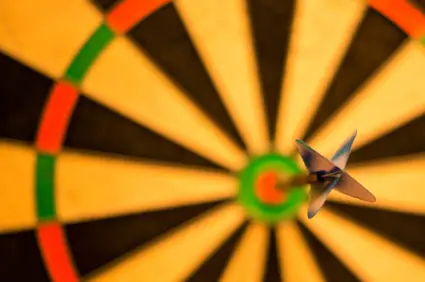
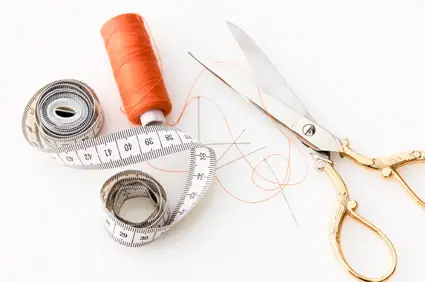
Online Charity Auction Strategy 3: Tailor Auction Items to Your Audience
Since most nonprofits look to donate items for charitable auctions, it’s tempting to throw anything that you can get donated up on your auction website. Sure, your supporters love your mission, but the auction items you offer are the main draw for your auction fundraiser. The more you tailor your auction items to your constituents, the more money you’ll raise.
Be sure to answer the following questions when putting together your auction catalog:
- Who are your constituents and target auction bidders?
- What are the hobbies and interests of your constituents?
- Are there items bidders spend money on that can be directed to your organization instead?
- What types of items can your average constituent afford to bid on?
- How much is your average constituent likely to spend?
Charity Auction Items that Sell Well
The auction item procurement process is critical to your auction’s success. Keep your audience and mind, and know what you want. The most popular charity auction items include:
- Travel packages and hotel stays
- Event tickets or backstage passes
- Gift baskets, including wine or beer packages
- Original artwork and jewelry
- Dinner gift certificates and fine dining experiences
- Electronics – TVs, computers, gaming consoles
- Subscriptions and services of all kinds
- Massages, manicures, or Spa packages
- Bricks or other named dedications to support your organization

While most organizations start with in-kind donations, you don’t want to limit the success of your fundraiser to only what you can get donated.
We offer unique travel packages for your charity auctions. These packages will allow your organization to save valuable time procuring those much sought-after auction items. Our charity auction items are offered on consignment – if your reserve is not met, the items aren’t sold.
Charity Auction Timeline

We have created this awesome Charity Auction Timeline to help make your fundraising auction successful. This timeline can be tailored to meet any organization’s needs. The most important thing is to start early and build on your organization’s relationships with businesses and the community. Done right, your charity auction can be a big fundraising success!
Charity Auction Timeline: First Steps
- Appoint an Auction Chair and key volunteers/staff/Board members who will serve on the auction steering committee. The more dedicated committee members you can find at this event stage, the more successful your auction will be.
- Review previous years’ event history and resources, if available. Be sure to learn from the lessons of the past.
- Set your auction objectives and fundraising goals. Include sponsorship sales, event ticketing proceeds (determine what you will charge), and more.
- Create a preliminary event budget with realistic goals for your event.
- Start an auction file where you will store all relevant data for your event for reference in the future. Be sure the steering committee members know to save all important documentation and resources for the future.

9 to 12 Months Prior to the Auction
- Decide on your auction timeline – including the auction start date and length of the online auction.
- Begin searching for an appropriate event venue for live events. Consider event capacity, location, costs, insurance, parking, and catering options.
- Make a list of potential corporate & community sponsors, and assign a committee member to follow up with each.
- Ask your organization’s Board of Directors to seek corporate sponsors and potential auction items for donation.
- Begin the auction procurement process – contact potential donors such as hotels, restaurants, and local merchants.
- Create sponsorship packages and sponsor recruitment materials. Be sure to emphasize to the sponsor the visibility they will receive by being a part of your auction event.
5 to 8 Months Before the Auction
- Your auction venue should be secured for live events. Complete paperwork as necessary.
- Begin looking for a catering service, if needed.
- Build your organization’s auction website and determine registration payment methods.
- Create and print promotional materials such as fliers and formal event invitations.
- Mail Save the Date postcards and/or advertise directly to your supporters via your website, Social media channels, and newsletters.
- Begin the process of advertising your event. Possible channels include TV, radio, newspapers, online calendars, community websites, fliers, and more. Consider engaging an advertising/ PR firm to help if your budget allows.
- Secure tables, chairs, linens, sound systems, decorations, and any other rentals for your live event.
- Place holds on luxury travel packages.
- Determine the logistics of your live event – auctioneer, emcee, entertainment, sound, celebrity host, volunteers, etc. Sign contracts as needed.
- Recruit a local celebrity host for your live event, if possible.
- Continue work to secure auction sponsorships.
- Launch your fundraising auction website.

3 to 4 Months Before the Auction
- Prepare your event menu with your catering company – be sure to provide vegetarian and other special request meals for your guests.
- Escalate your auction procurement – all donations should be secured in this period. Purchase any remaining items needed.
- Mail personal invitations to your donors and supporters.
- Select and order awards if you will honor constituents/Board members/staff at your event.
- Begin recruiting volunteers for a live event. You may need volunteers for event registration, greeters, parking assistance/valet parking, auction runners, auction check-out, decoration & set-up, and event clean-up.
- Continue with advertising and event PR campaigns.
- Determine all technical details for your live event check-out process. If you will require auction payment terminals to process final bids at the event, reserve them with your merchant services provider.
1 to 2 Months Before the Auction
- Prepare the event program and timeline.
- Begin taking online registrations and auction bids on your auction website.
- Find clients or presenters to talk about their experience with your organization and how it has impacted them positively. This could be done with a PowerPoint or slide show for maximum impact.
- Assign your auction items to live and silent auction categories, and create a schedule for the live auction items.
- Host a volunteer training session so your event day volunteers know what to expect. If possible, host the meeting at your event venue and provide a tour to your volunteers.
- Finalize volunteer schedules and responsibilities.
- Finalize and print the auction catalog and event program.
- Continue with advertising and event PR campaigns.
- Order or create your bid paddles (for live auctions).
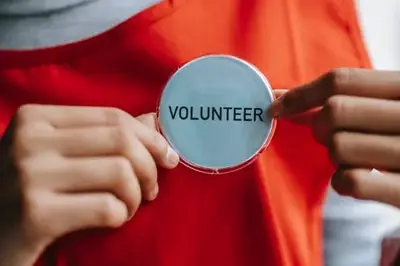
1 to 2 Weeks Prior to the Auction
- Confirm final guest count and special meal requests with your catering company.
- Prepare catalog and product information for your auctioneer.
- Finalize all technical details for online access and payments at the event.
- Organize all auction items, putting together packages, baskets, and displays for your live event.
- Finish all administrative registrations on your auction website and assign individual guests to open tables.
- Meet with the emcee and/or presenters to review the event timeline and program. Prepare a script for each presenter.
48 Hours Before the Auction
- Print QR codes or bid sheets for your live event.
- Deliver your auction items, decorations, signs, goody bags, and other event materials to the venue.
- If the venue is available, set up decorations, tables, podium, sound system, etc., for your event early.
- Finish all administrative registrations on your auction website and assign individual guests to open tables.
- Assign bid paddles or bidding numbers for each participant (if performing a live auction).
- Print your registration report and any other reports you want to take to the event.
Show Time!
- Arrive early for registration and auction set-up. Bring reports, payment terminals, and any remaining items to the event venue.
- Hang instructional signs for registration, parking, auction check-out, restrooms, etc.
- Be sure volunteers are in place early and trained for each position. Assign greeters to welcome guests and have at least one volunteer runner.
- Always remember to recognize and thank your event sponsors.
- Enjoy and have fun!

Immediately Following the Auction
- Organize an auction wrap-up meeting with the entire auction committee to critique the event and update your auction files with suggestions for next year’s event. This should be done within a week of the event so that everything is fresh in the committee members’ minds.
- Purchase DoJiggy auction items for delivery direct to winning bidders.
- Complete all financials – determine actual monies raised, make final payments on open invoices, etc.
- Send thank-you notes to all event sponsors and volunteers detailing the amount raised and their contributions.
- Update your website and social media pages with event pictures, thank yous, and special moments from your event.
More Online Fundraising Auction Resources
We provide auction coordinators with free resources as part of our commitment to helping organizations run successful and profitable fundraising auctions. All of these resources can be easily modified to meet your organization’s needs.
Free auction resources include an auction timeline and planner, a fundraising budget, silent auction bid sheets, and a set of letter templates (sponsor solicitation and thank you letters, a participant registration confirmation letter, and a potential charity auction item donor letter).
